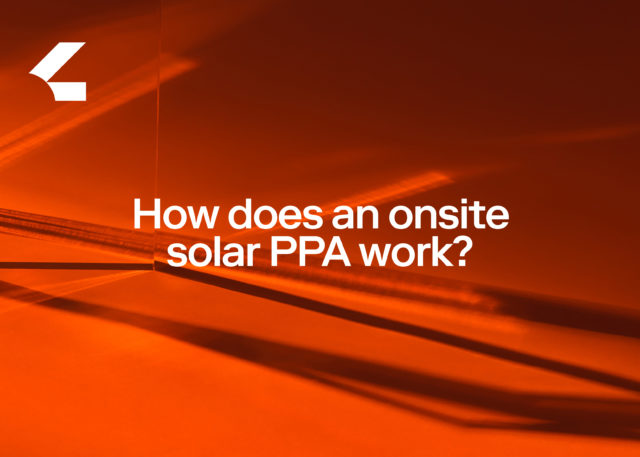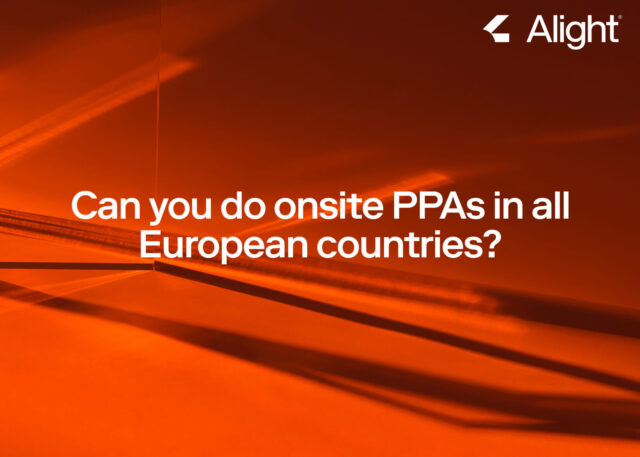The solar market is developing rapidly. In Europe, solar is attracting greater market share, earning the No. 1 spot in the renewable energy market for the ninth year in a row.[1] Across Europe, solar plants are now being built without government subsidies. In 80% of the European countries, solar energy is now below grid parity.[2]
In Europe, the size of the solar market has increased substantially. In 2010, the installed capacity totaled 2 GW in the EU. Eight years later, it was up to 114 GW. In 2017, more solar cells than any other energy source in the world were installed—almost twice as much as wind power, and more than nuclear and fossil combined. Globally, almost as many solar cells were installed in 2017 as there were in total in the market in 2012.[3]
What are the reasons for the rapid growth of solar cells in Europe?
Several countries introduced investment support to incentivize solar energy during the 2000s and 2010s, which led to solar energy gaining more market share.
In addition to investment support, feed-in tariffs (FiT) have also been common for solar cells in Europe. The state guarantees a fixed price for the surplus produced by the solar cells, and the energy companies are obligated to pay that price to the producers.
Another major reason for the rapid growth is that the price of solar panels has dropped sharply. Through technological development, larger production volumes and more efficient production. The prices of solar PV LCOE (levelized cost of energy) has gone down by more than 80% over the last 10 years globally.[4]
Post-subsidy growth stagnation
As the price of solar cells began to approach the price level for other energy sources, several countries in Europe reduced or completely removed government financing and support schemes. This led to a temporary decline in the number of new photovoltaic installations in some European countries. Since 2018 however, most solar markets in EU have recovered. 2019 experienced the highest growth of installed solar capacity in Europe since 2010.
Accelerated growth
But the stagnation from removed subsidies was only temporary. Since then, solar has re-emerged especially amongst late blooming EU countries that needs to increase their renewable electricity supply when phasing out fossil fuels.
Europe is now entering a second growth phase as new business models emerge and when solar is no longer dependent on subsidies. Annual growth is expected to increase substantially by 2022.[5]
This is driven by several market trends:
- The downward price trend is expected to continue. The LCOE in 2019 for Helsinki was 0.05 EUR per kWh. This is expected to go as low as 0.02 EUR per kWh in 2050.[6]
- Previous countries that were skeptical towards renewables are now on the rise. In 2019, Poland was ranked as the fifth country in Europe with the highest newly installed capacity with 784 MW[7] (a fourfold increase in its capacity from 2018).
- Global corporates are taking environmental leadership. Tesco, Google, InBev and Heineken are some of the leading brands worldwide procuring solar through PPAs. As the global renewable energy movement gains momentum, more corporates will follow.
- Digitalization and energy storage will be critical to support solar development. As storage prices go down and digital solutions improve, corporates will likely yield better results from their solar plants than what is possible today.
PPA: a business model for corporates, without government support
In the UK, Spain and Italy, reduced subsidies have caused a temporary halt in solar growth. But as new business models and more private players have entered the market, growth has accelerated again. Companies are also experiencing the economic and communicative benefits of solar without government support.
The PPA business model is gaining traction among corporates, discovering the benefits of saving electricity costs and reducing CO2 emissions. When procuring solar through PPA, the PPA provider is responsible for the investment cost and absorbs the financial and legal risk. While the customer is responsible for paying a fixed price per kilowatt hour of electricity produced by the panels. Europe has now 8.4 GW of planned and built PV projects under PPAs.
Why do companies choose the PPA model?
In 2016, PWC conducted a study on why companies invested in PPA. The survey was conducted at large global corporates and included wind PPA. The most popular reason was for the company to achieve sustainability goals, followed by economic savings, price locking of electricity and to improve their reputation.
Google, a PPA pioneer, entered its first PPA in 2010 in the US and has now several in Europe.
“Since we’ve started doing our long term PPAs, we’ve seen many other technology and traditional companies follow suit,” Google Global Vice President Joseph Kava says. “I believe we’re starting to see industry in general realize that this is just not the right thing to do, but it’s good business as well.”
Here to stay
All signs show the solar PPA model will continue its upward trajectory. As the battle against climate change gains momentum, people are increasingly demanding that reduction of CO2 emissions are taken seriously by their governments and corporates. Installed solar capacity reached record levels in 2019. Experts expect record levels will continue during the first three years of the 2020s.
Governing authorities like the EU also see several benefits of PPA. In the Renewable Energy Directive II (RED II), the EU calls respective countries to simplify administration and laws regarding the PPA, in order to promote further growth in renewable energy.
As the PPA business model continues to gain market share, we can expect the PPA to include more smart data and eventually storage, making solar an even more financially attractive investment for companies.
Here’s how global brands are leading the way to renewable energy
Tesco
By 2030, Tesco aims to be run on 100% renewable energy. The biggest part of their renewable energy will come from on or near-site PPA. In one of the major milestones to reach that target, Tesco announced major renewable energy projects, including rooftop solar and a solar park.
Google
To learn more about Google’s impressive renewable energy goals and why they use PPAs to reach those goals, read more here.
InBev
The brewery of the famous beer Budweiser signed Europe’s largest corporate solar PPA in January 2020. Read more about the brewery’s action plan to reach 100% renewable energy.
Heineken
Only a month after InBev announced its large solar PPA, its competitor, Heineken Spain, signed a 50 MW solar PPA that will power all of its breweries and offices in Spain. Heineken’s ultimate vision is to operate at 100% carbon neutral by 2030.
Microsoft
In January 2020, Microsoft announced its plan to be carbon negative by 2030 and remove its previous carbon emissions out of the atmosphere. Part of that goal is transitioning to 100% renewable energy. By 2025, Microsoft’s plan is to have PPAs replace 100% of its carbon-emitting electricity throughout its operations.
[1] https://www.iea.org/reports/tracking-power-2019/solar-pv
[2] Based on data from Eurostat, Eneo research work
[3] https://www.solarpowereurope.org/wp-content/uploads/2018/09/Global-Market-Outlook-2018-2022.pdf page 5
[4]LCOE= the total production cost of solar energy per unit of energy. Source: IEA World Energy Outlook 2019
[5] http://www.solarpowereurope.org/wp-content/uploads/2018/09/Global-Market-Outlook-2018-2022.pdf see page 74-75 for different scenarios.
[6] https://www.solarpowereurope.org/wp-content/uploads/2019/12/SolarPower-Europe_EU-Market-Outlook-for-Solar-Power-2019-2023_.pdf?cf_id=9593 page 7
[7] https://www.solarpowereurope.org/wp-content/uploads/2019/12/SolarPower-Europe_EU-Market-Outlook-for-Solar-Power-2019-2023_.pdf?cf_id=9593 page 10

